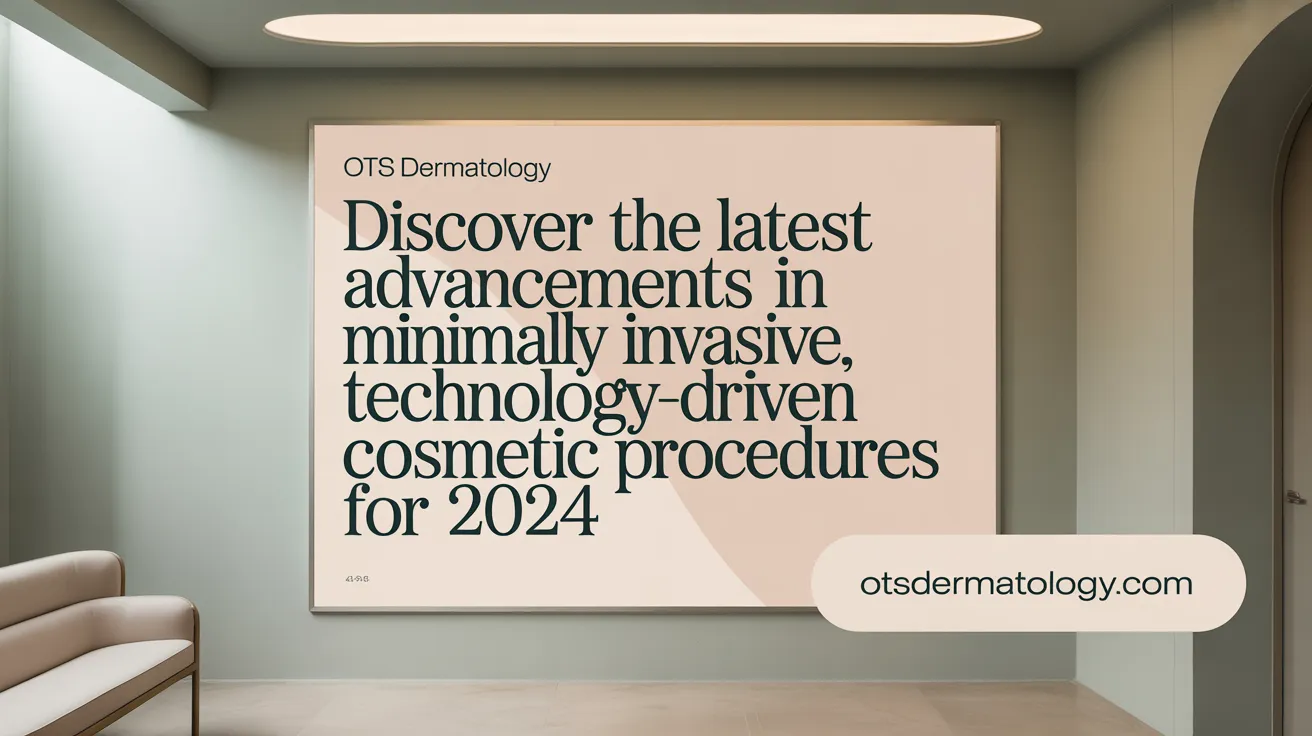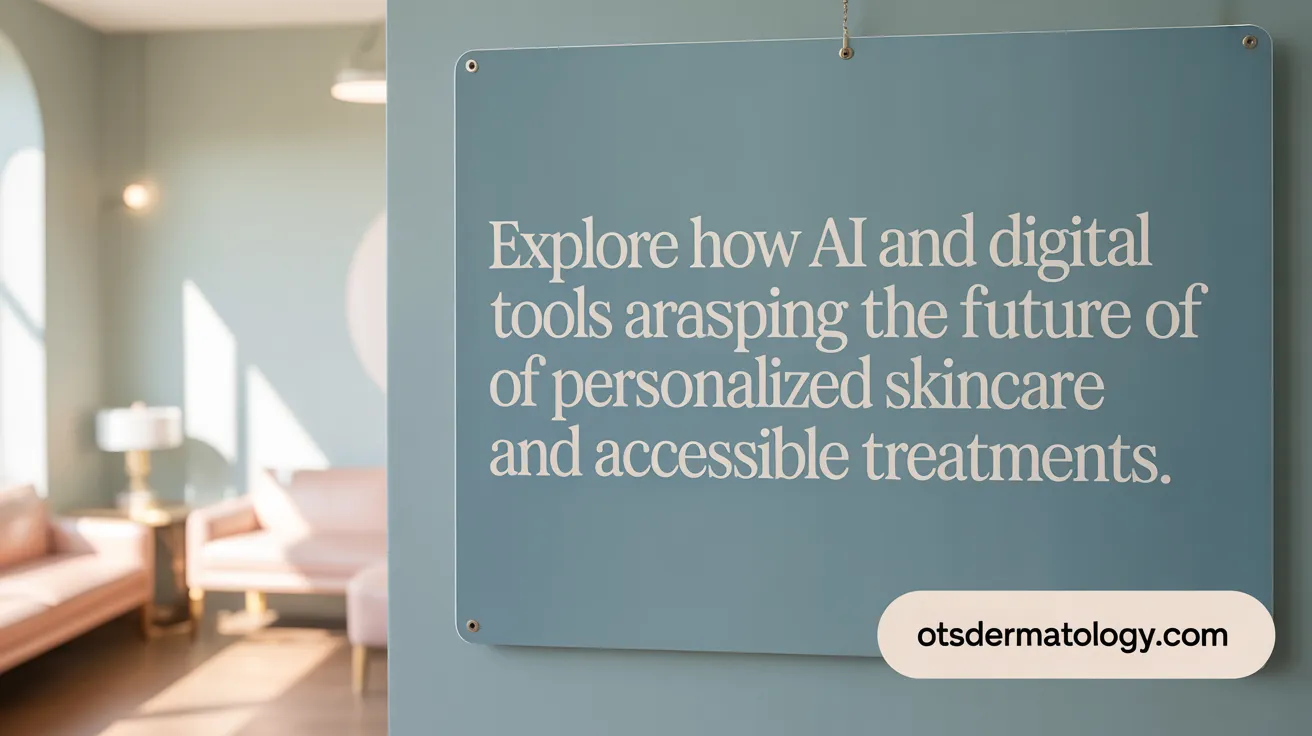Introduction to Modern Cosmetic Dermatology
Cosmetic dermatology is rapidly evolving with groundbreaking advances in botulinum toxins, platelet-rich plasma therapies, laser technologies, and minimally invasive treatments. This article explores the latest scientific developments, clinical evidence, and emerging trends shaping the field in 2024 and beyond, revealing how personalization, technology, and regenerative medicine are redefining skin rejuvenation and aesthetic enhancement.
Revolutionizing Treatments: Innovations in Botox, PRP, Fillers, and Laser Therapies
 Recent developments in cosmetic dermatology for 2024 demonstrate a significant shift toward personalized, minimally invasive, and technology-driven treatments. Innovation is driven by AI and data analytics that enable practitioners to create tailored skincare plans based on individual genetics, skin type, and environmental influences — enhancing treatment efficacy and patient satisfaction.
Recent developments in cosmetic dermatology for 2024 demonstrate a significant shift toward personalized, minimally invasive, and technology-driven treatments. Innovation is driven by AI and data analytics that enable practitioners to create tailored skincare plans based on individual genetics, skin type, and environmental influences — enhancing treatment efficacy and patient satisfaction.
Laser technology has advanced dramatically, introducing more precise fractional lasers capable of treating scars, wrinkles, and pigmentation with minimal downtime. Devices like Pico lasers and Nd:YAG lasers are designed for safe use across diverse skin tones, including darker skin, thereby expanding options for a broader population.
Bioengineered ingredients—such as growth factors, peptides, and exosomes—are now commonly incorporated into skincare products and injectable treatments to stimulate cellular regeneration and improve skin strength. Non-surgical techniques like radiofrequency microneedling and ultrasound therapy are gaining popularity for their ability to tighten skin and stimulate collagen production with little to no recovery time.
In the realm of injectables, reformulated Botox products such as Daxxify offer longer-lasting results, sometimes extending to six months or more. Quality fillers like Juvederm have been FDA approved for specific indications such as temple hollowing, offering more precise and natural results. Additionally, the emergence of nanotechnology enhances active ingredient delivery into the skin, boosting treatment effectiveness.
Emerging therapies involve gene-based approaches, utilizing regenerative medicine techniques like stem cell treatments and exosomes as nanocarriers that influence cellular activity, which are also promising for skin rejuvenation and anti-aging needs.
Integrating artificial intelligence into diagnostics and planning further enhances the customization of treatments, enabling objective measurement and outcome simulation.
Overall, these innovations enable more targeted, safer, and effective aesthetic procedures that align with holistic skin health, emphasizing long-term results, inclusivity, and sustainability.
Scientific Insights: Efficacy and Safety of Botox, PRP, and Adjunctive Procedures
Current scientific and clinical evidence overwhelmingly supports the effectiveness of Botox in temporarily reducing facial wrinkles by blocking nerve signals to specific muscles, inducing muscle relaxation; effects typically last around three to four months. Extensive studies, including over 574 peer-reviewed articles, confirm its safety when administered by qualified professionals. Common side effects are mild and transient, such as limited bruising or swelling, with serious adverse events being rare (BoNT serotypes and variants).
Platelet-rich plasma (PRP) therapy is gaining attention for its potential in skin rejuvenation and hair restoration, leveraging growth factors to stimulate collagen synthesis and tissue regeneration. While numerous studies report improvements in skin texture, elasticity, and hair density, the variability in PRP preparation protocols and patient responses results in mixed evidence. Randomized controlled trials sometimes show modest or inconsistent benefits, indicating the need for standardized procedures and further research (PRP use in sports medicine).
Beyond Botox and PRP, other cosmetic treatments like dermal fillers and laser therapies are supported by substantial clinical data, demonstrating their safety and aesthetic benefits. Nonetheless, it is essential that these procedures are performed by trained practitioners to minimize risks, such as unintended asymmetry or skin damage (cosmetic dermatology procedures).
Combining treatments—such as Botox with PRP or fillers—has been shown to enhance overall outcomes, offering comprehensive skin improvements. Evolving protocols emphasize personalized treatment plans tailored to individual needs, optimizing efficacy while maintaining safety. Ongoing research focuses on refining injection techniques, dosing, and timing to achieve the best therapeutic and aesthetic results (Top Botox Trends, PRP combined with dermal fillers).
In conclusion, both Botox and PRP are backed by a solid body of scientific evidence when used appropriately. While Botox boasts a long-standing safety record and predictable results, PRP's potential remains promising but warrants standardized clinical guidelines and further validation to confirm its long-term benefits. Continuous advancements in cosmetic medicine aim to enhance safety profiles and maximize patient satisfaction through evidence-based practices (Advancements in cosmetic dermatology).
Cutting-Edge Applications and Techniques in Botulinum Neurotoxins

What are the new formulations and innovative techniques involving botulinum neurotoxins and Botox treatments?
Recent innovations in botulinum neurotoxins (BoNT) have significantly expanded their applications, driven by breakthroughs in formulations and delivery methods. Modern products include high-dose and liquid toxins that provide longer-lasting effects, which are particularly beneficial for treating severe glabellar lines. These formulations allow for more consistent and prolonged muscle relaxation, often extending the duration of results to six months or more.
Practitioners now employ microdosing strategies, known as Baby Botox or Micro-Botox, to achieve subtle, natural results. These techniques involve injecting smaller quantities of toxin into superficial skin layers or specific muscle groups to improve skin texture, pore size, and provide a gentle lifting effect without the frozen appearance associated with traditional methods.
Combination therapies have also gained popularity, integrating Botox with dermal fillers, laser treatments, and skin tightening procedures. This holistic approach enhances overall facial rejuvenation and addresses multiple aging signs simultaneously.
On the molecular front, researchers are engineering specific, targeted neurotoxins. Creating chimeras and modifying receptor-binding domains aim to increase precision, onset speed, and duration of effect. These molecular modifications include developing variants that can target sensory neurons, providing new therapeutic avenues for pain, depression, and autonomic nerve regulation.
Furthermore, newer formulations such as pre-filled syringes and ready-to-inject liquids improve ease of use, reduce preparation time, and ensure consistent dosing. These advances are making botulinum toxin treatments more effective, safer, and adaptable to a wider range of clinical and aesthetic needs.
Overall, these ongoing innovations are transforming the landscape of botulinum neurotoxin applications—offering personalized, longer-lasting, and minimally invasive solutions that meet evolving patient expectations and expand therapeutic boundaries.
Advanced PRP: Skin Rejuvenation, Hair Restoration, and the Vampire Facelift
 Advanced platelet-rich plasma (PRP) for skin rejuvenation applications are extensively used for skin rejuvenation, hair restoration, and facial treatments such as the Vampire Facelift by leveraging its high concentration of growth factors like PDGF, TGF-β, VEGF, EGF, and IGF-1 to stimulate collagen synthesis, improve skin texture, and promote tissue remodeling.
Advanced platelet-rich plasma (PRP) for skin rejuvenation applications are extensively used for skin rejuvenation, hair restoration, and facial treatments such as the Vampire Facelift by leveraging its high concentration of growth factors like PDGF, TGF-β, VEGF, EGF, and IGF-1 to stimulate collagen synthesis, improve skin texture, and promote tissue remodeling.
In skin rejuvenation, PRP induces extracellular matrix remodeling, resulting in reduced wrinkles, increased skin firmness, and overall skin quality enhancement; these effects are often sustained over months. Clinical studies have documented improvements in pore size, texture, pigmentation, collagen density, and skin elasticity after multi-session PRP treatments. When combined with procedures like microneedling and hyaluronic acid, PRP shows a synergistic effect, enhancing collagen production and skin brightness.
For hair restoration, especially in androgenic alopecia and alopecia areata, PRP promotes hair follicle proliferation, stimulates vascularization, and exerts anti-inflammatory effects. Patients typically undergo a series of treatments spaced four weeks apart, leading to increased hair density, thickness, and improved scalp health, making PRP a popular non-surgical option for preventing and reversing hair loss.
In facial treatments such as the Vampire Facelift, PRP is combined with dermal fillers or microneedling to enhance collagen production and tissue regeneration. This combination results in improved facial contour, skin elasticity, and a more youthful appearance, all with minimal downtime.
Due to its autologous origin, PRP has a low risk of adverse reactions, which makes it a favored choice in aesthetic medicine. Ongoing research continues to refine application protocols, optimize platelet concentrations, and explore new synergies, aiming to maximize its rejuvenating potential across various dermatological and cosmetic procedures.
Digital Transformation and Emerging Frontiers in Cosmetic Dermatology

How are digital technologies such as AI and telemedicine transforming the practice and future of cosmetic dermatology?
Digital technologies like artificial intelligence (AI) and telemedicine are revolutionizing cosmetic dermatology by significantly improving diagnosis, treatment personalization, and patient accessibility. AI-powered tools, including advanced skin analysis devices, augmented reality (AR) applications, and at-home skincare management platforms, allow practitioners and patients to assess skin conditions accurately, tailor skincare routines, and visualize expected outcomes. These systems enable real-time monitoring of skin improvements and early detection of potential issues, leading to more effective interventions.
Telemedicine expands access by allowing virtual consultations, follow-ups, and multidisciplinary collaborations without geographical constraints. This is especially beneficial for patients in remote or underserved areas, reducing wait times and increasing convenience. Enhanced AI algorithms support better outcome predictions and help clinicians optimize treatment plans based on individual genetics, skin type, and environmental factors. Consequently, these technological advances are fostering a more precise, accessible, and customized approach, culminating in improved patient satisfaction and clinical results.
Overall, the integration of digital tools is making cosmetic dermatology more efficient, personalized, and inclusive, paving the way for innovations such as AI-driven diagnostics, robotic assistance, and comprehensive virtual care in the coming years.
What emerging procedures and industry shifts beyond traditional cosmetic dermatology treatments?
The current landscape of cosmetic dermatology is shifting toward regenerative therapies and combination modalities that go beyond conventional treatments. PRP, exosome therapy, and stem cell microneedling are gaining popularity for their ability to stimulate the body's healing and rejuvenation processes naturally. Energy-based devices like radiofrequency microneedling, high-intensity focused ultrasound (HIFU), and advanced laser systems are improving skin tightening, lifting, and rejuvenation with minimal downtime.
Industry trends also emphasize personalized and holistic care, utilizing AI-driven skincare plans, virtual consultations, and patient monitoring devices, such as wearable skin sensors that track UV exposure and hydration. Treatments are increasingly tailored for diverse skin types, promoting inclusivity and safety.
Furthermore, the focus on sustainability is evident through the development of eco-friendly products, biodegradable packaging, and reef-safe sunscreens. Combining multiple modalities—like pairing lasers with fillers or microneedling with PRP—maximizes results while reducing invasive procedures.
In essence, technological advances and a shift toward holistic, natural, and sustainable practices are steering cosmetic dermatology toward a future that prioritizes minimally invasive procedures, personalized outcomes, and broader accessibility, reflecting a more integrated approach to aesthetic and skin health care.
Looking Ahead: The Future Landscape of Cosmetic Dermatology
The future of cosmetic dermatology stands at the intersection of cutting-edge science, technology, and personalized patient care. Innovations in botulinum neurotoxins, platelet-rich plasma, laser therapies, and digital tools are reshaping how clinicians approach skin rejuvenation and aesthetic enhancement. Embracing minimally invasive techniques, regenerative medicine, and AI-driven customization promises treatments that are safer, more effective, and aligned with individual needs. As the industry advances, a commitment to inclusivity, sustainability, and ethical practice will be essential in delivering holistic and empowering outcomes. Ultimately, the evolving landscape offers exciting possibilities for those seeking youthful, natural beauty supported by scientific rigor and technological excellence.
